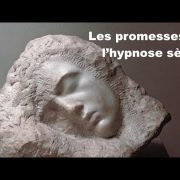Love is one of the most complex feelings of the human being. This is evidenced in the number of conceptualizations that have been made around it. Indeed, various specialists, psychologists, sociologists, biologists, and more have developed different theories of love. Even so, it remains a feeling that’s difficult to reduce to a theoretical explanation.
In this article, we’ll look at some of the recognized theories of love within the field of psychology. However, it should be noted that this list isn’t exhaustive. In fact, both psychology and other disciplines have other theories that are equally interesting.
Some theories of love according to psychology
Various theories of love have been formulated in psychology. Among the most recognized are the following:
1. Triangular theory of love
One of the most recognized theories of love is the one proposed by the psychologist, Robert Sternberg. He defines love in terms of three components :
- Intimacy. It refers to the feelings within a relationship that promote closeness, bonding, connection, trust, friendship, and affection.
- Passion. The intense desire for union with the other. It encompasses feelings of physical attraction, sexual or romantic desire, and psychological arousal.
- Commitment. The decision to love another person and the commitment to maintain that love. It involves maintaining the relationship in good and bad times.
Combinations of these three components result in different types of love. For example, combining intimacy and commitment results in compassionate love. On the other hand, combining passion and intimacy leads to romantic love.
According to Sternberg, relationships based on two or more elements are more durable than those based on a single component. He uses the term consummate love to describe the combination of intimacy, passion, and commitment. Sternberg states that this type of love is the strongest and longest-lasting. However, it’s also the least common.
2. Compassionate love versus passionate love
Elaine Hatfield is a social psychologist and professor at the University of Hawaii. She claims that there are two types of romantic love :
- Compassionate love. Also called complementary love, it’s characterized by mutual respect, attachment, trust, and affection. It usually develops from mutual understanding and shared respect in the couple.
- Passionate love. Characterized by intense emotions, sexual attraction, anxiety, and affection. When these intense emotions are reciprocated, people feel elated and fulfilled. When it’s not reciprocated, feelings of despondency and despair occur. Hatfield suggests that this type of love is transitory and usually lasts between six and 30 months. After this period, it becomes compassionate.
In general, passionate love is characterized by its intensity, while compassionate love is defined by its level of intimacy.
It’s important to note that people who are in compassionate love still feel passionate about each other, but the intensity generally feels less overwhelming and urgent. In fact, this type of love implies caring deeply for the other person, truly knowing them, and being committed to them, both in good times and bad.
3. The color wheel model
Psychologist, John Lee, in his book Colors of Love: An Exploration of the Ways of Loving, presents another of the theories of love. He compares the styles of love with the color wheel. In fact, he claims that, just as there are three primary colors, there are also three primary styles of love. They’re as follows:
Eros
The term eros comes from the Greek word meaning ‘passionate’ or ‘erotic’. Lee describes this style as sensual, intense, and full of passion. Erotic lovers seek sexual satisfaction and aesthetic enjoyment for both parties.
Ludus
It means ‘game’ or ‘school’ in Latin. This type of love refers to those who see love as the desire to have fun with each other. They enjoy indoor and outdoor activities, tease, and play harmless pranks on each other.
They rarely, if ever, get too involved and can often have more than one partner at a time.
Storge
It comes from the Greek term meaning ‘natural affection’. It’s often represented by family love between parents and children, siblings, and extended family members. It can also develop from friendship when people who share interests and commitments gradually develop affection for each other.
Lee also proposed that, just as primary colors can be combined to create complementary colors, these three primary love styles can be combined to create nine secondary love styles.
Secondary loves styles
- Mania (Eros + Ludos). This type of love tends to drive the couple into a kind of madness and obsession. Manic lovers speak of their partners in possessives and superlatives. They feel that they ‘need’ them. In excess, mania turns into obsession or codependency.
- Pragma (Ludos + Storge). This is a convenient type of love. Pragmatic lovers wish to find value in their partners and ultimately want to work with them toward a common goal. The practicality and realism of pragmatic love often contribute to the longevity of the relationship, as long as common goals and values remain shared over time.
- Agape (Eros + Storge). Derived from the Greek, for ‘altruistic love’. Lee describes agape as the purest form of love. It’s based on an unwavering commitment and selfless and unconditional love. The lover derives more pleasure from giving than from receiving. In addition, they remain faithful to their partner to avoid causing them pain, and will often wait patiently for their partner to return after a breakup.

Tertiary loves
Lee defines nine types of tertiary love that are combinations of the previous six types of love. Each combination includes a primary and a secondary.
- Manic eros.
- Manic ludus.
- Manic storge.
- Agapic eros.
- Agapic ludus.
- Agapic storge.
- Pragmatic eros.
- Pragmatic ludus.
- Pragmatic storge.
Although Lee named each of the tertiary types of love, he never found sufficient evidence to fully distinguish between them.
These theories of love suggest that we don’t all experience this emotion in the same way. Even the same style can be experienced with different levels and intensity. Unsurprisingly, this makes it extremely difficult to explain the complex feeling of love in only one theory.
The post Theories of Love appeared first on Exploring your mind.



















Comments